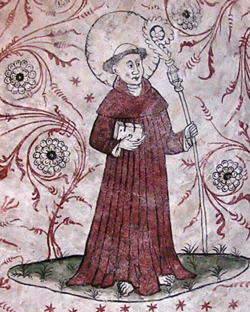
Västmanland County is a county or län in central Sweden. It borders the counties of Södermanland, Örebro, Gävleborg, Dalarna and Uppsala. The county also has a stretch of shoreline towards Mälaren.
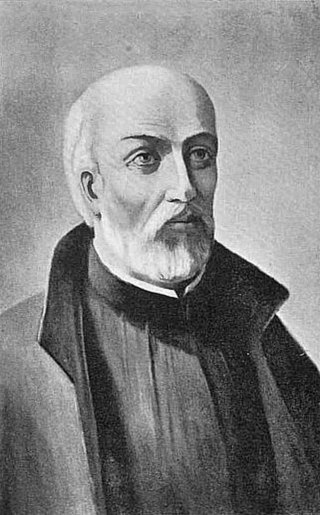
Jean de Brébeuf was a French Jesuit missionary who travelled to New France (Canada) in 1625. There he worked primarily with the Huron for the rest of his life, except for a few years in France from 1629 to 1633. He learned their language and culture, writing extensively about each to aid other missionaries.

Simon the Zealot or Simon the Canaanite or Simon the Canaanean was one of the most obscure among the apostles of Jesus. A few pseudepigraphical writings were connected to him, but Jerome does not include him in De viris illustribus written between 392 and 393 AD.

The Catholic Church in Sweden was established by Archbishop Ansgar in Birka in 829, and further developed by the Christianization of Sweden in the 9th century. King Olof Skötkonung is considered the first Christian king of Sweden.
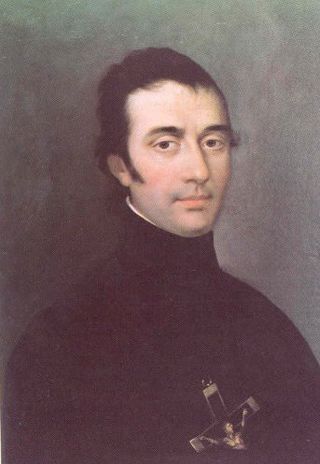
Eugène de Mazenod, OMI was a French aristocrat and Catholic priest. Mazenod founded the congregation of the Missionary Oblates of Mary Immaculate.

John Ogilvie, SJ was a Scottish Jesuit martyr. For his work as a priest in service to a persecuted Catholic community in 17th century Scotland, and in being hanged for his faith, he became the only post-Reformation Scottish saint.
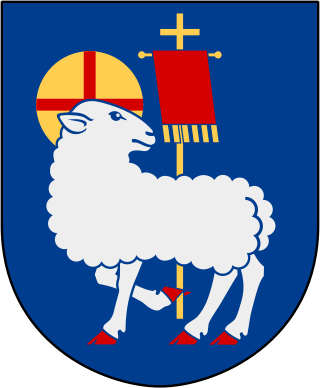
The Diocese of Västerås is a diocese within the Church of Sweden. Its Episcopal see is located in Västerås at Västerås Cathedral. The diocese was first established in the 12th century as part of the Roman Catholic church, but was made part of the Church of Sweden as a result of the Protestant Reformation in Sweden.

The Diocese of Strängnäs is a part of the Lutheran Church of Sweden and has its seat in Strängnäs Cathedral in Strängnäs, south of Lake Mälaren. The diocese is made up of the two provinces Närke and Södermanland.

Saint Eskil was an Anglo-Saxon monk particularly venerated during the end of the 11th century in the province of Södermanland, Sweden. He was the founder of the first diocese of the lands surrounding Lake Mälaren, today the Diocese of Strängnäs. He is the patron saint of Södermanland and the Diocese of Strängnäs.
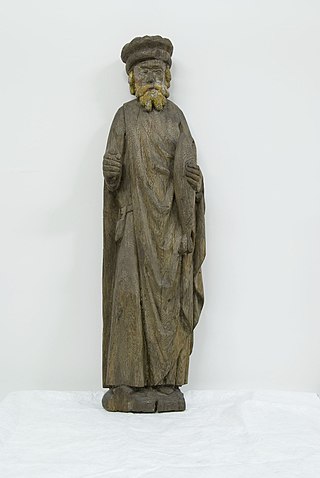
Saint Botvid was a Christian missionary in Sweden during the 11th and early 12th centuries.

The 26 Martyrs of Japan were a group of Catholics who were executed by crucifixion on February 5, 1597, in Nagasaki, Japan. Their martyrdom is especially significant in the history of the Catholic Church in Japan.

Saints Primus and Felician (Felicianus) (Italian: Primo e Feliciano) were brothers who suffered martyrdom about the year 304 during the Diocletian persecution. The Martyrologium Hieronymianum gives under June 9 the names of Primus and Felician who were buried at the fourteenth milestone of the Via Nomentana (near Nomentum, now Mentana).
Eskil was a 12th-century Archbishop of Lund, in Skåne, Denmark.

Daniel and companions were seven Friars Minor martyred at Ceuta on 10 October 1227, according to the Chronicle of the Twenty-Four Generals of the Order of Friars Minor. Their story is likely a legend or fabrication. The names of Daniel's companions are borrowed from the authentic account of the martyrdom of Berard of Carbio and his companions in 1220.

Symphorian, Timotheus (Timothy), and Hippolytus of Rome are three Christian martyrs who, though they were unrelated and were killed in different places and at different times, shared a common feast day in the General Roman Calendar from at least the 1568 Tridentine calendar to the Mysterii Paschalis. While still a young man, Symphorian was either beheaded or beaten to death with clubs.
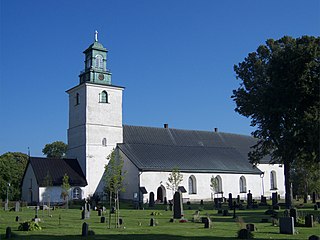
Munktorp is a locality situated in Köping Municipality, Västmanland County, Sweden with 455 inhabitants in 2010.

Hed socken in Västmanland, Sweden, was a part of the Skinnskattebergs bergslag and is since 1971, a part of Skinnskatteberg Municipality.
